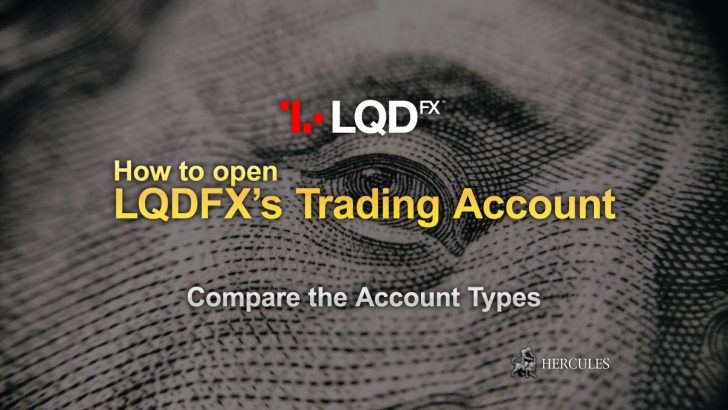Categories
When is the best time to trade in Forex market?
Know the best moments to trade FX online to expand the trading opportunities everyday.


How to Trade the Different Forex Time Zones
Forex trading is all about investing in currencies because you think the value of one currency will appreciate/depreciate against another one.
There are many currency pairs to use in Forex trading, such as majors, minors, exotics, and others depending on which country you want to invest in, which brings us to Forex sessions.
When investing in the Forex market, remember there are different Forex trading sessions, so the market is effectively open 24 hours a day, though there are various levels of activity throughout the day.
Just because the FX market is open 24 hours a day, doesn’t mean you should sit in front of your computer all the time.
The most profitable trading opportunities occur when the markets are showing the highest trading volume and volatility, which happens when there are more active traders in the markets.
Timing is everything in trading
It’s essential to know when the FX market is quiet and when it is more volatile, so you can take advantage of bigger price movements.
As a forex trader, you should be mindful there are four important trading sessions you can take advantage of.
These are:
| Sydney session | Australian session |
|---|---|
| Tokyo session | Asian session |
| London session | European session |
| New York session | American session |
The New Zealand session opens the foreign exchange market each day.
This is then followed by the open of the Sydney session.
Next, you have the Tokyo session which is when volume starts to increase.
Next, it is the open of the London fix and another increase in global trading volumes.
But the largest increase in trading activity and volume is when London is trading, and the New York session begins.
What should you focus on?
The busiest times during each trading day is when two sessions are open at the same time because there is more money being exchanged.
In summertime, the Tokyo and the London session overlap.
In winter as well as summertime, the London and New-York session also overlap.
On the other hand, there are moments when the trading session is quieter, such as before the opening of the London session, because the American and European markets aren’t open yet, so the American and European currencies aren’t active.
As a forex trader, you must know which currency pairs to focus on depending on the time zone you want to trade.
For instance, when the London and the New-York sessions overlap, traders will have better liquidity and higher trading volume, as well as more volatility.
They should focus on the following currency pairs:
- EUR/USD
- GBP/JPY
- USD/CAD
- GBP/USD
- USD/CAD
- USD/CHF
- GBP/CHF
Start investing in Forex marlet
With the major currency pairs, trends can sometimes begin during the London session and continue during the New York session.
Regarding the Asia Pacific sessions – remember that Japan is the 3rd largest worldwide FX trading centre, with the Yen being the 3rd most traded currency (behind the USD and the EUR). The Japanese Yen is involved in 21.6% of all trading volume according to the latest Bank for International Settlements (BIS) survey in 2016.
Of course, there are other financial centres in Asia, such as Singapore and Hong-Kong. Stronger price movements occur in currency pairs involving the JPY, the AUD, and the NZD during these trading sessions.
What are the challenges and advantages of trading different time zones?
Trading different time zones can sometimes be a good opportunity, especially if traders can’t trade during their time zones, as the market is open around-the-clock.
It can sometimes be tricky, however, as they have to deal with different trading volumes, foreign economic developments, and the most challenging and confusing aspect: time differences.
The most important thing to remember is the best time to trade is when two sessions overlap, with the European often being the busiest session.
You can often observe wider pip ranges in the middle of the week, with the start of the week often being the slowest day to trade.
Be careful when major economic or political news is released, as they can spark strong volatility, and remember that more than 87% of all FX transactions involve the USD, so any news coming from the U.S. will have the greatest impact on the overall FX market.
The importance of keeping trading records to be successful
Being able to exploit your strengths and know which aspects of your trading or personality you need to work on is a great advantage that will improve your results in the long-term.
One way of doing so is by keeping records of your trading activity, so you can come back to it, see what you have done and learn from the past.
Of course, most MT4 brokers will provide a record of your positions with some statistical data, but it’s always best to have a trading journal, as it will contain more personal details than your brokerage statement.
What is a trading journal? How do you create one? And why is it so important to your trading success?
What is a trading journal and how will keeping one will help you?
A trading journal can be compared to a personal diary, but solely dedicated to trading.
The point of this journal is to have a place where you keep records of all your trading activity – including personal thoughts and state-of-being.
Like this, you will be able to analyse them afterwards, so then you can be better prepared for future trades.
A journal is a great trading tool to help you fine-tune your analytical skills by looking at what you’ve done and why.
It will be a sort of database of your trading performance, allowing you to gauge how efficient and successful your trading plan was/is.
It will also help you to know what you can do differently, so you can adjust and be even more profitable.
It’s not only about analysing your overall trading performance, but it’s also about analysing your decision process and trading psychology behind each of your positions.
You can then correct any toxic behaviour that alters your trading and learn from your mistakes, such as trading out of greed, boredom or impulse.
You should write down as much information as possible, as long as they are useful to your analysis and can help you improve. You can use these questions to create your journal:
- How did you feel before starting your trading day?
- How well did you follow your trading plan and execute your setups?
- What could you have done differently to better respect your trading strategy?
- How good was your trading strategy? Did you have any new ideas or thoughts about it during your trading? Are there any parameters that you might change?
- Why did you decide to open a position when you did?
- Were you using appropriate money management tools, such as stop-loss and take-profit orders?
- Did you change some of your parameters while being in position, and why?
- How well did you manage your emotions? Did they affect your trading, and if so, how?
- How did you feel at the end of the trading session – as well as when you were in open trades?
- Did you miss any trading opportunities?
- Other observations or comments.
What should you include in your trading journal?
- The date and hours when you started/stopped trading.
- Which Forex, Index or Commodities you were trading.
- The leverage effect used, as well as the size of your trading positions.
- The direction of each position.
- Statistical data about your performance and your risk: how many trades you made – including how many winning and losing positions, profit factor, Sharpe ratio, the percentage of winning/losing positions, net profit/loss and max drawdown. These are automatically recorded in MT4.
- Comments on market conditions, on your way of dealing with open positions, profits and losses.
Pro tip: There is no doubt about the usefulness of keeping records, but it can sometimes be difficult to do so while trading – especially if you are a day trader or a scalper.
An alternative to handwriting could be to use screenshots of each trading session.
This way, you can have a view of the market conditions, your analysis of important levels and your trading orders.
Of course, it’s important to make notes on your pictures with any comment about what we have seen above, so then you can change what needs to be improved on future trades.










